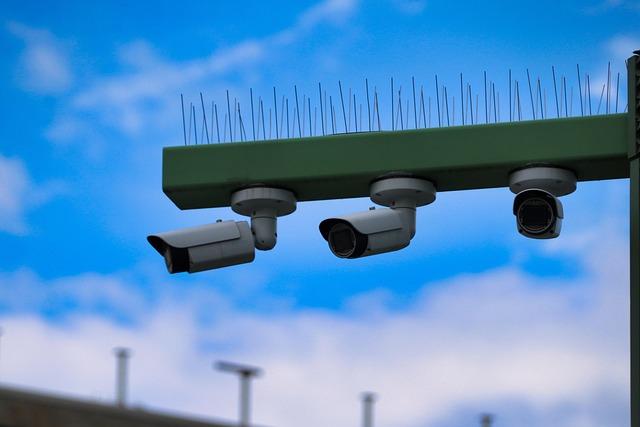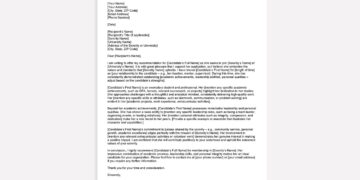In an era where technology permeates every aspect of life, its dual capacity to empower and oppress has never been more evident. In Iran, a nation steeped in a complex interplay of tradition, governance, and modernity, the digital landscape has increasingly become a frontier for social control, particularly in regard to women and girls. As the Iranian regime ramps up its efforts to leverage technology in ways that infringe upon the rights and freedoms of half its population, the implications are profound and far-reaching. This article explores the intersection of digital surveillance, religious doctrine, and the societal roles expected of women and girls in Iran, unraveling the layers of a strategy that seeks to reshape their identities and freedoms through a technological lens. Join us as we delve into the mechanisms at play, shedding light on the challenges faced by those living under the watchful eye of an evolving authoritarian state.
Strategies of Surveillance and Control: How Technology Shapes Womens Lives in Iran

In recent years, the Iranian government has intensified its surveillance apparatus, particularly focusing on women and girls as part of a broader strategy to enforce societal norms dictated by a conservative interpretation of Islamic law. Technological advancements have provided the state with tools that go beyond traditional methods of observation, effectively intertwining daily life with pervasive monitoring systems. This creates an environment where, for many, personal freedoms are curtailed under the pressure of constant scrutiny.
The government’s use of social media monitoring, facial recognition, and mobile surveillance represents a multi-faceted approach to controlling women’s behavior. Reports indicate that authorities regularly scan social media for indicators of non-compliance with societal expectations, such as photos depicting women without hijabs or engaging in activities deemed inappropriate. Additionally, the implementation of mandatory tracking apps raises critical questions about digital privacy, as women are coerced into providing personal data that can be used against them in a punitive manner.
This digital oppression manifests in various ways, including the following tactics:
- Repression of Online Discourse: Censorship of content that promotes gender equality or critiques government policies.
- Harassment: Cyberbullying and threats directed at those who challenge norms or engage in activism.
- Legal Repercussions: Use of data obtained from surveillance to prosecute women for perceived violations of dress codes or behavior.
As a result, the integration of technology into state control mechanisms not only represses individual expression but also stifles collective action, effectively creating a chilling effect that permeates the lives of women across the nation.
The Role of Social Media in Promoting Gender Inequality and State Propaganda

In recent years, social media has emerged as a powerful tool not only for communication but also for the dissemination of ideologies, particularly concerning gender roles and state narratives. Governments frequently leverage these platforms to reinforce patriarchal values, exploit vulnerabilities, and manipulate the public perception of gender equality. This is especially pertinent in regimes where strict adherence to religious and cultural norms dictates societal structure, as seen in Iran’s evolving engagement with technology. The use of social media allows state actors to bypass traditional media restrictions, thus fostering environments laden with misinformation and propaganda targeted primarily at women and girls.
Through sophisticated campaigns, social media platforms become avenues for spreading state-sponsored narratives that instill fear and obedience among the female populace. Key strategies employed include:
- Censorship of Feminist Voices: Actively blocking or silencing accounts that promote gender equality.
- Promotion of Anti-Western Sentiments: Framing gender equity movements as Western imports, thus justifying their repression.
- Utilization of Hashtags: Creating trending topics to normalize ideologies that support traditional gender roles.
This deliberate shaping of online discourse not only reinforces the state’s socio-political agenda but also seeks to construct a narrative that diminishes women’s agency. Resource allocation towards technology-enhanced surveillance and monitoring of social media activities underscores a strategic approach to control public sentiment and maintain ideological conformity. Interestingly, a recent analysis has shown a surge in regulatory measures aimed explicitly at online spaces patronized by young women, revealing a troubling double-edged sword where access to information can become a tool for oppression rather than empowerment:
| Social Media Impact | Gender Implications |
|---|---|
| Encouragement of Conformity | Reinforced stereotypes |
| Amplified Misinformation | Promotion of fear campaigns |
| Training Ground for Surveillance | Invasion of privacy |
Empowering Resistance: Womens Digital Activism Against Technological Oppression

In a world increasingly driven by technological advancement, the use of digital tools has emerged as a double-edged sword, particularly in the context of gender equality. Across Iran, women and girls have found themselves at the epicenter of a battle where their digital footprints are scrutinized, exploited, and weaponized against them. As governmental efforts ramp up to monitor and restrict their online presence, these individuals harness the same technology to push back against oppression, illustrating the transformative power of digital activism.
Women have begun to create spaces that are both safe and empowering, utilizing various platforms to share their stories, mobilize support, and organize grassroots movements. The following strategies exemplify how female activists are leveraging technology:
- Anonymous Blogging and Vlogging: Utilizing pseudonyms to share personal narratives and raise awareness on issues affecting women.
- Social Media Campaigns: Forming collectives on platforms like Instagram and Facebook to amplify their messages and reach a wider audience.
- Digital Literacy Workshops: Facilitating sessions to educate women on safe internet practices, helping them navigate potential dangers.
The fight against technological oppression is not without its challenges, as systemic barriers remain prevalent. A glimpse into the statistics surrounding this struggle reveals a stark reality:
| Statistical Insight | Percentage (%) |
|---|---|
| Women experiencing online harassment | 65 |
| Girls with limited access to educational technology | 45 |
| Activists reporting threats to their safety | 50 |
As this evolving landscape unfolds, it becomes evident that women’s digital activism plays a crucial role in resistance against technological oppression. By fostering solidarity and promoting digital rights, they are not only standing against their marginalization but are also actively reshaping the narrative of women in technology across the globe.
Recommendations for International Advocacy: Supporting Womens Rights in the Digital Age

In the face of escalating efforts to undermine women’s rights through technology, international advocacy must adopt a multi-faceted approach to empower women and girls. To effectively counter these oppressive measures, organizations and activists can consider implementing the following strategies:
- Digital Literacy Programs: Developing training modules that focus on digital literacy can equip women and girls with the necessary skills to navigate the digital landscape safely. By fostering understanding of privacy tools, online security, and the implications of sharing personal data, these initiatives can significantly reduce risks.
- Policy Advocacy: Engaging with international bodies to push for stricter regulations concerning data privacy and the exploitation of technology against marginalized groups is essential. Advocates must lobby for comprehensive frameworks that address digital rights as human rights, ensuring that women and girls are protected in the digital sphere.
- Coalition Building: Forming alliances between local and global organizations can amplify voices and foster a support system. By harnessing shared resources and experiences, these collaborations can create impactful campaigns that raise awareness and mobilize action against technology-facilitated gender discrimination.
Moreover, leveraging social media as a tool for awareness and advocacy can play a crucial role in counteracting oppressive narratives. Employing creative digital campaigns that highlight stories of resistance and resilience can inspire solidarity and support across borders. The following table illustrates examples of successful digital advocacy strategies previously employed:
| Campaign Name | Focus Area | Outcome |
|---|---|---|
| #MeToo | Sexual Harassment Awareness | Global Movement Against Harassment |
| Girls Who Code | STEM Education for Girls | Increased Female Representation in Tech |
| Women in Tech | Promotion of Gender Equality in Technology | Creation of Support Networks |
fostering a culture of online safety and respect through community engagement can create a protective environment for women and girls. Campaigns aimed at redefining online behavior and instilling a sense of shared responsibility can alter perceptions around harassment and abuse. With continuous innovation and adaptation, advocates can ensure that the journey towards equality in the digital age not only remains a goal but becomes a tangible reality for all.
In Retrospect
As we conclude our exploration of the intersection between technology and the targeting of women and girls in Iran, it becomes evident that the implications of these efforts extend far beyond borders and cultures. The use of digital tools as instruments of control reflects a chilling reality where advancements intended to connect and empower can also serve to surveil and suppress. As the international community watches closely, the resilience of those affected remains a beacon of hope. It is essential to engage in continued dialogue and action, advocating for the rights of women and girls everywhere, and ensuring that technology is harnessed to uplift rather than oppress. In a rapidly evolving digital landscape, vigilance and commitment to justice will be paramount in the fight for equality. Only by understanding and addressing these issues can we strive towards a future where technology becomes a means of liberation, not a weapon of control.































